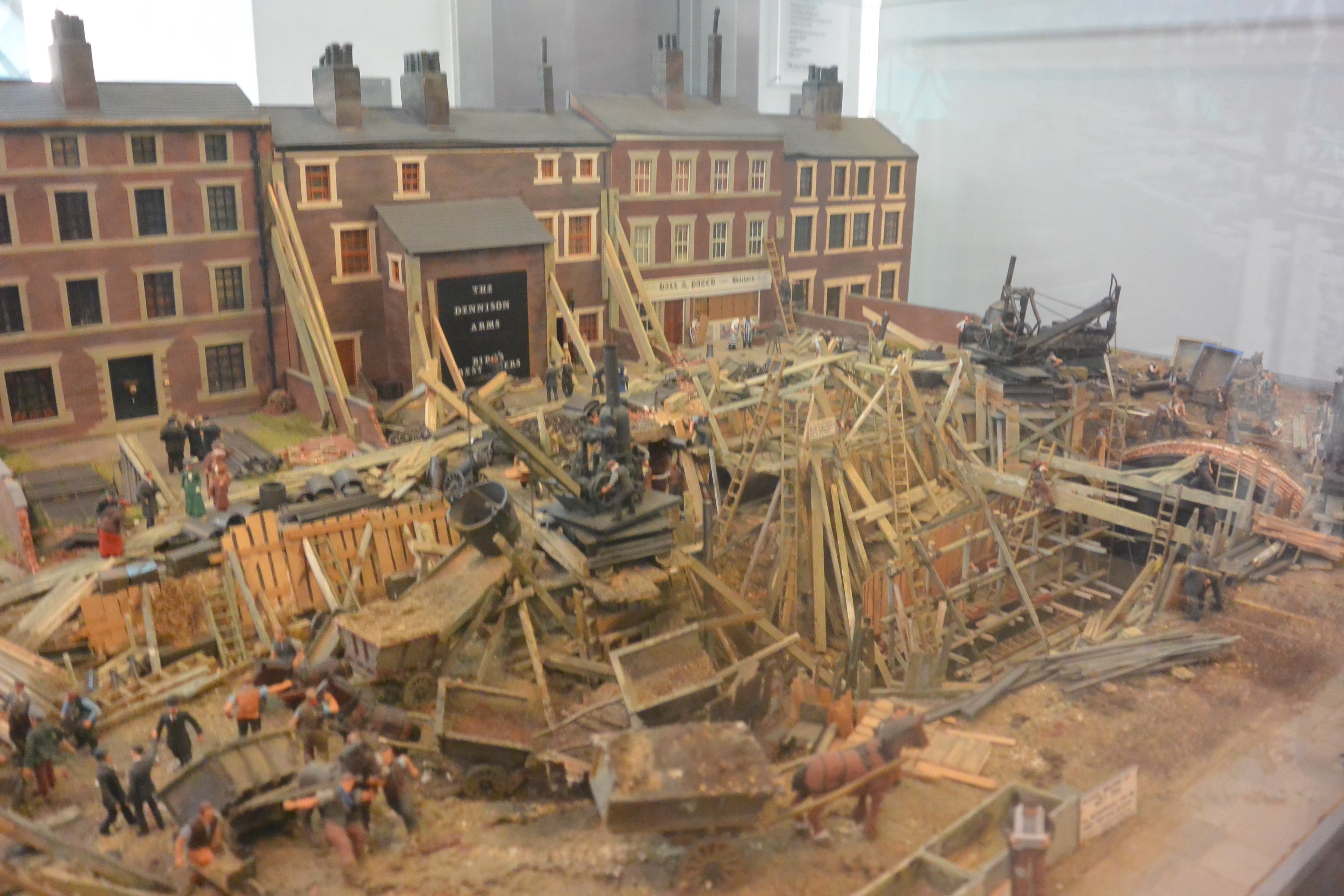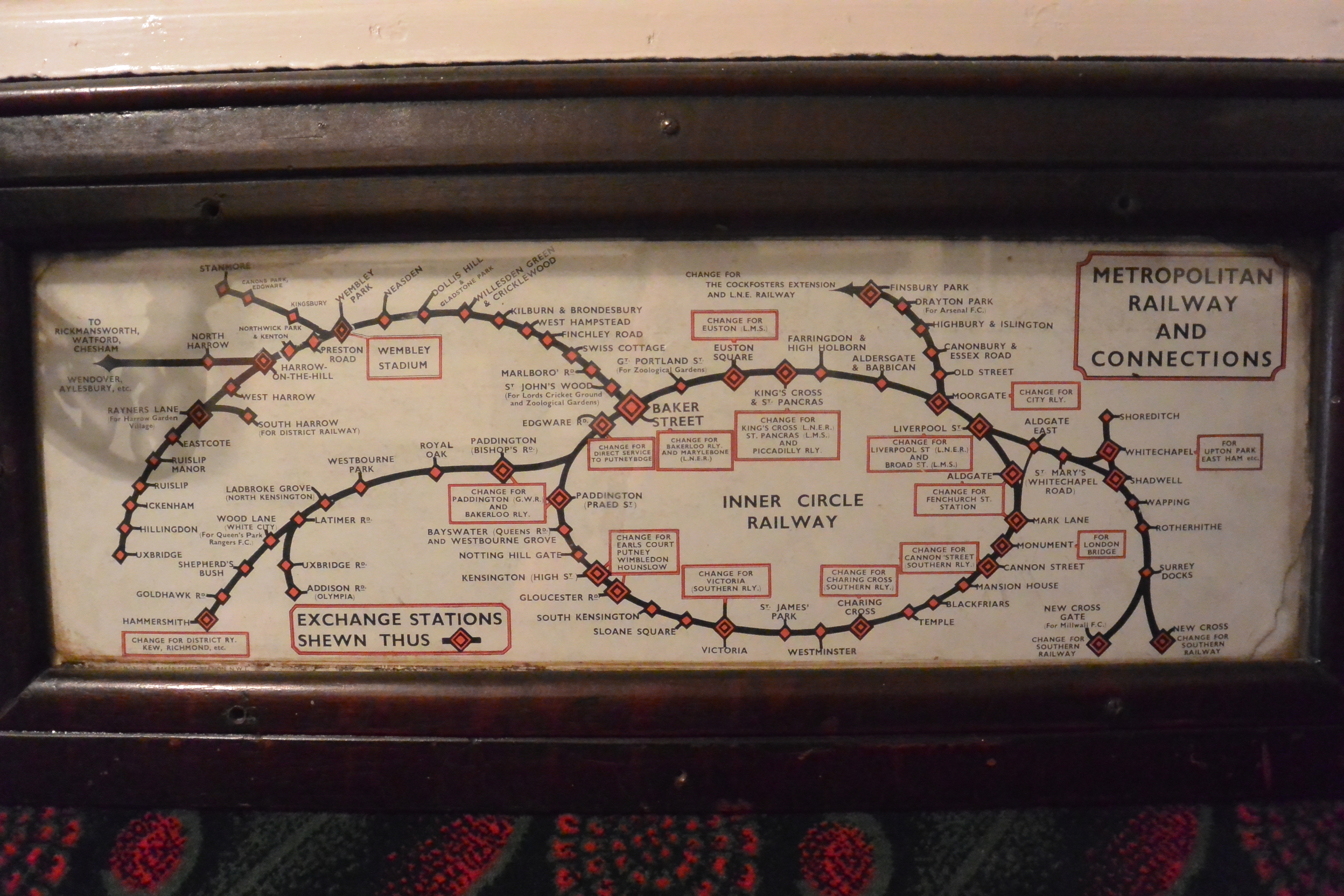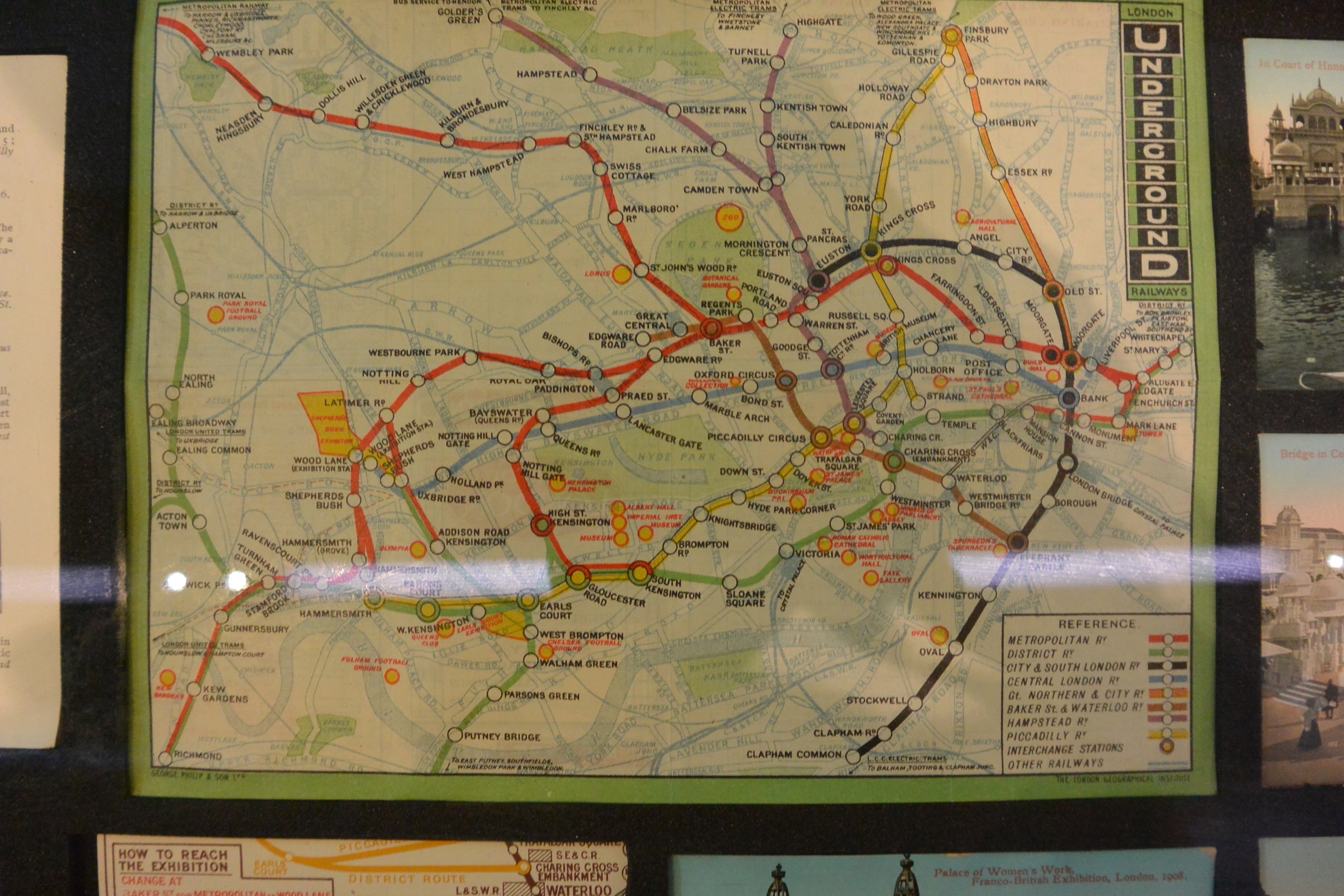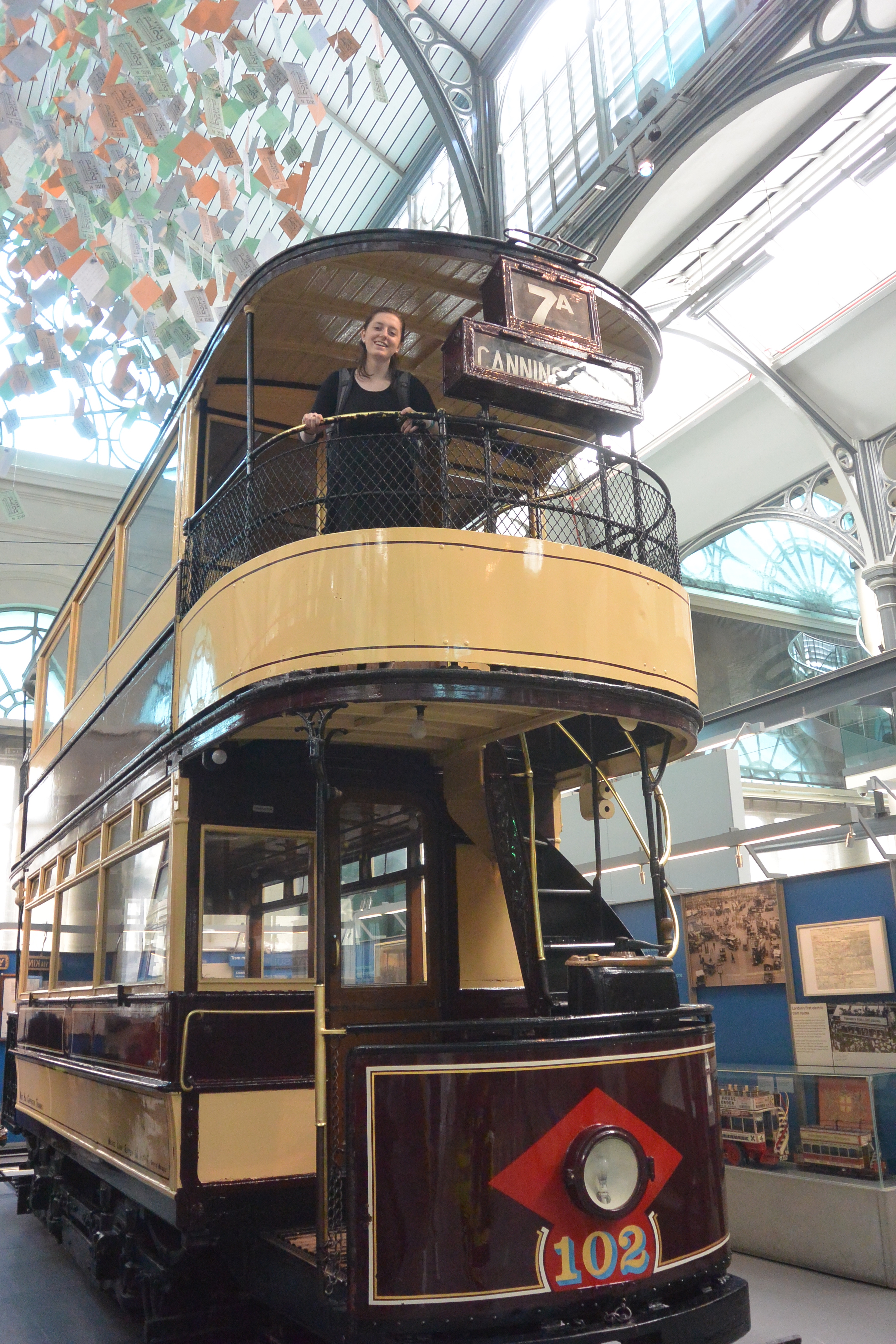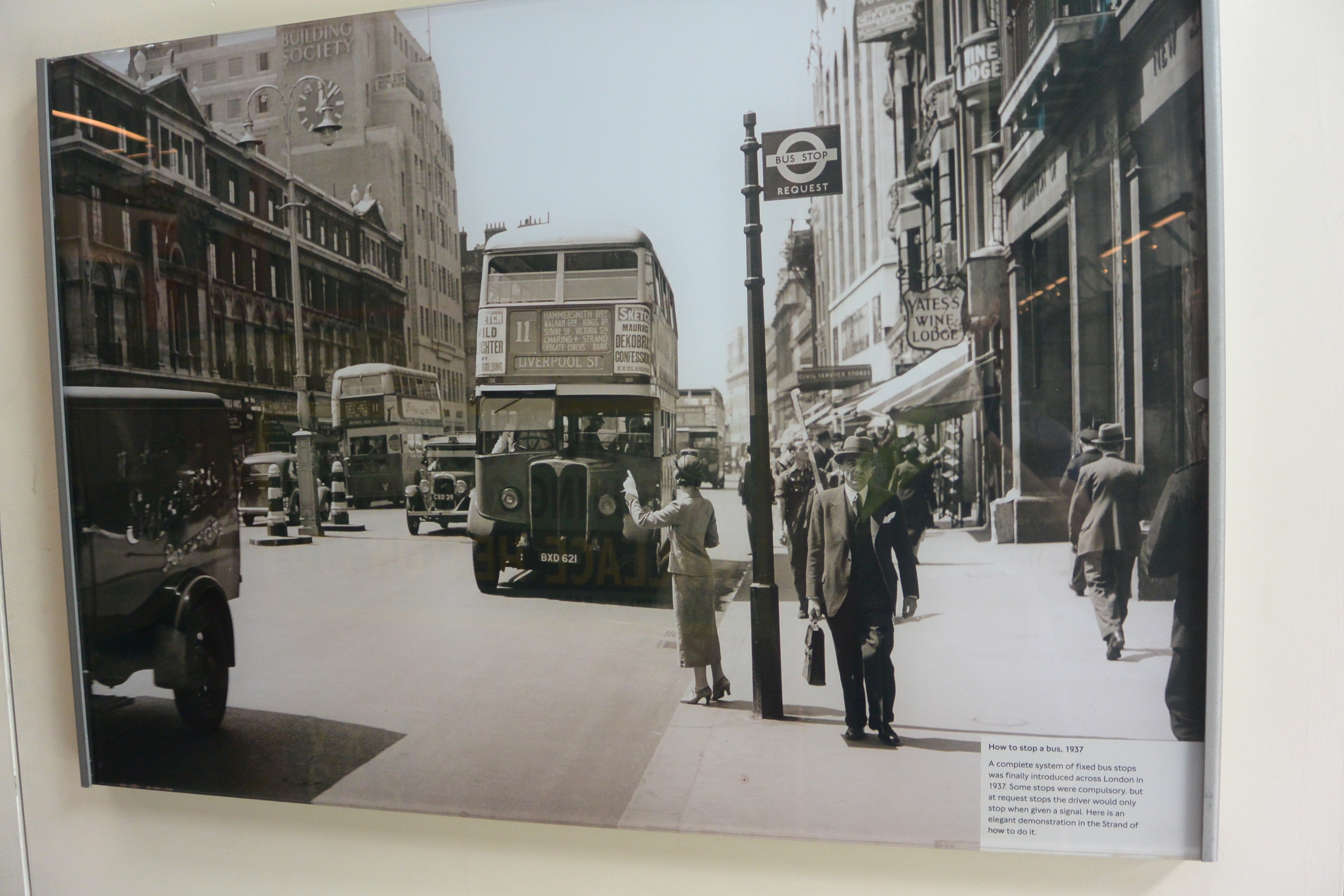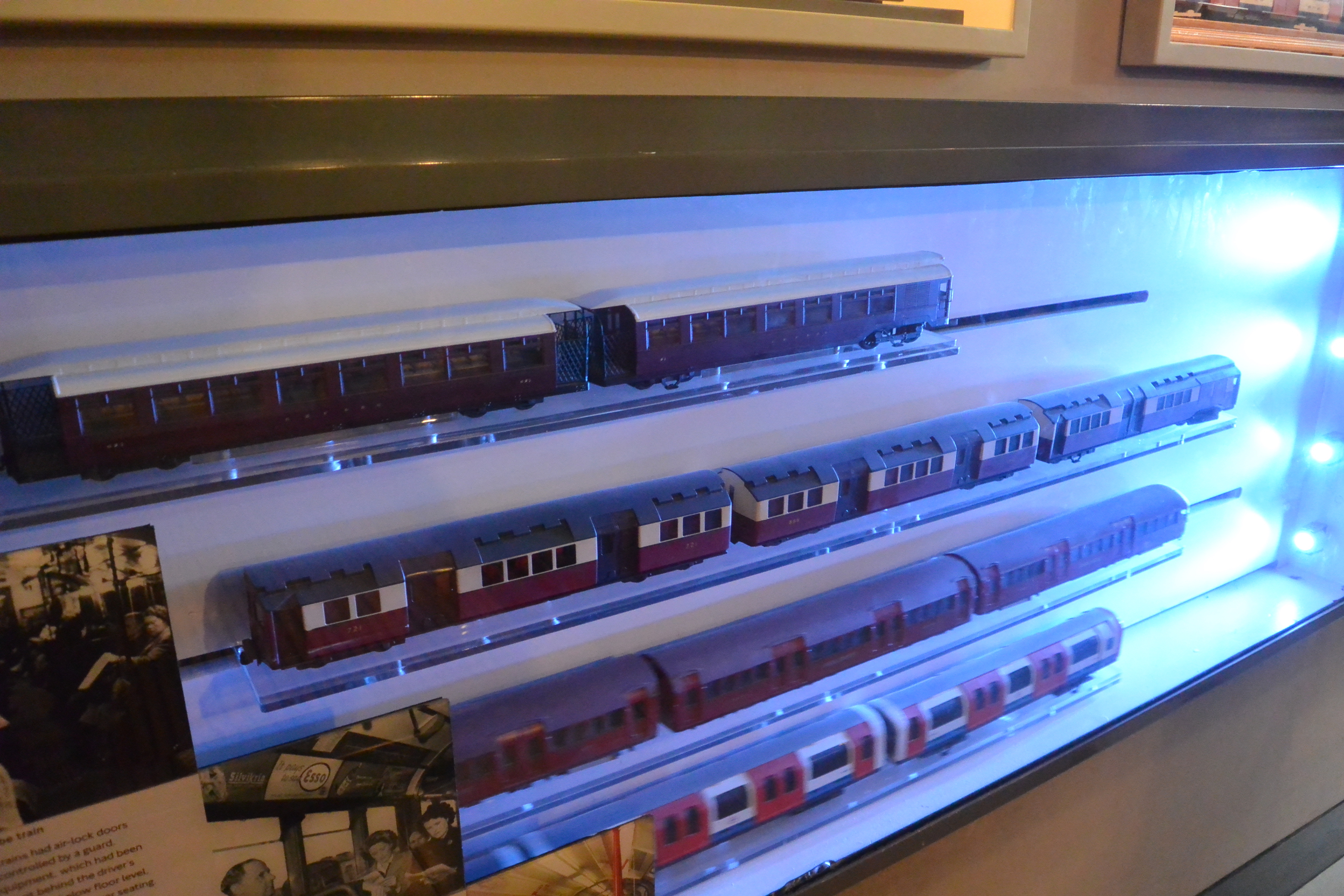Difference between revisions of "Getting Around London"
From Londonhua WIKI
Akacherski (talk | contribs) (→Succeses and why) |
Akacherski (talk | contribs) (→Popularity) |
||
| Line 72: | Line 72: | ||
<br><br> | <br><br> | ||
| − | ===Popularity=== | + | ==='''Popularity'''=== |
In 1920 the bus was the most popular method of transportation in London. By the time 1930 came around, the people of London were making close to 2 Billion bus trips per year, which was more than double the amount that was being made in 1921. The large increase in popularity was caused by many changing aspects of the buses and their routes. Covered second levels of the buses were created and new pneumatic tires also replaced older ones, making the bus ride much more comfortable for the passengers. Bus routes also expanded to be just from central London to the new suburban areas and into the country. | In 1920 the bus was the most popular method of transportation in London. By the time 1930 came around, the people of London were making close to 2 Billion bus trips per year, which was more than double the amount that was being made in 1921. The large increase in popularity was caused by many changing aspects of the buses and their routes. Covered second levels of the buses were created and new pneumatic tires also replaced older ones, making the bus ride much more comfortable for the passengers. Bus routes also expanded to be just from central London to the new suburban areas and into the country. | ||
Revision as of 21:31, 10 May 2017
Getting Around London
by Andrew Kacherski and Emily McEachern
 The Tube |
 Double Decker Bus |
Contents
Abstract
The paragraph should give a three to five sentence abstract about your entire London HUA experience including 1) a summary of the aims of your project, 2) your prior experience with humanities and arts courses and disciplines, and 3) your major takeaways from the experience. This can and should be very similar to the paragraph you use to summarize this milestone on your Profile Page. It should contain your main Objective, so be sure to clearly state a one-sentence statement that summarizes your main objective for this milestone such as "a comparison of the text of Medieval English choral music to that of the Baroque" or it may be a question such as "to what extent did religion influence Christopher Wren's sense of design?"
Introduction
I suggest you save this section for last. Describe the essence of this project. Cover what the project is and who cares in the first two sentences. Then cover what others have done like it, how your project is different. Discuss the extent to which your strategy for completing this project was new to you, or an extension of previous HUA experiences.
As you continue to think about your project milestones, reread the "Goals" narrative on defining project milestones from the HU2900 syllabus. Remember: the idea is to have equip your milestone with a really solid background and then some sort of "thing that you do". You'll need to add in some narrative to describe why you did the "thing that you did", which you'd probably want to do anyway. You can make it easy for your advisors to give you a high grade by ensuring that your project milestone work reflects careful, considerate, and comprehensive thought and effort in terms of your background review, and insightful, cumulative, and methodical approaches toward the creative components of your project milestone deliverables.
Section 1: Background
The Tube
History
The world's first public railway was a horse drawn line near London in 1803. Steam locomotives would come to take their place in 1825. They applied this idea to passenger trains. George Stephenson built the first inter-city passenger line, the Liverpool & Manchester Railway, in 1830. The first suburban railways opened in 1837 and took passengers from London to Paris and vice versa.
In 1854, The Metropolitan Railway Company was given the task of building an underground line to relieve the city traffic congestion. The underground construction also meant that no property needed to be destroyed at ground level. This line would bring passengers to Paddington, Euston, and King's Cross stations. This line would be known as the Metropolitan Railway
In the early 1900's, thousands of people traveled to London's city center for work from the suburbs. Horse drawn carriages could not take them the distance needed to get to their jobs. Trains became the preferred mode of transportation. This allowed the middle class to move out of the city center to more affordable suburbs and still work in the city. In 1912, it was estimated that 25% of all riders rode the cheap, early, workman's train. This 25% was dominated by men. Women often rode the suburban rails for leisure travel.
During the beginning of the Second World War, many preparations were made to protect the city's transportation systems because many feared that the city would be destroyed by Nazi air raids. Staff for the various transportation systems were trained in fire fighting and first aid in case of emergency, and some of the Underground's stations were converted to air raid shelters. The government also utilized the underground stations as administrative offices and for military purposes. Evacuation procedures were also created in case of emergency, so children could find safety in case of an attack situation. Similar to many other jobs during World War II, women began to replace men as they went off to war.
Technology that made the Tube possible
With the ability to harness water pressure, the first lift was installed into the underground in 1890. This was the first lift of its kind because while Otis (who did work in Worcester MA) was building lifts to bring people up floors, this lift was designed to bring people down levels. This lift brought people down 50 feet. Those who rode it said it gave them the sensation that the earth is rising around you. Without this technology, the tube would not be where it is today. People are more inclined to use the tube since it has a safe and easy way to get to the platform as opposed to taking 5 flights of stairs with their stuff (baby carriages, groceries, etc). It also allowed the handicapped to easily access the platform.
Electricity was another major technology that allowed the tube to thrive. Prior to 1890, the trains were not electric. This means that they were using steam engines. When you are 50 feet below the ground in a concrete tube full of steam-exhaust, it gets quite warm. People often did not take the trains because it felt like a mild form of human torture, an article in The Times wrote in 1884 "a journey from Kings Cross to Baker street is a form of mild torture which no person would undergo if he could conveniently help it". They would rather walk than pay to go into a boiling hot tunnel. With the introduction of electricity, tunnels became cooler and quieter. This attracted more people it made the ride more enjoyable.
Successes and why
Popularity
The Double Decker Bus
History
London was a very crowded city. With an expanding population, people needed to find affordable places to live. The cost of living increased with the population. This forced families to live in the cheaper areas outside of the city. They still needed to get to the city. To make the journey faster, buses were introduced. Buses, in theory, help to relieve traffic. By taking 22 cars off the road and putting its passengers into one vehicle, the number of cars will significantly decrease. The omnibus did just that.
The London bus dates back to 1829 with the introduction of the omnibus. It held 22 passengers and had only one route. This bus would often get crowded so they had the revelation of adding seats to the roof, creating the first double decker bus. As they gained popularity, features were added to them such as a roof on the second deck. It was advertised saying "(the) omnibus if fashionable, French, and suitably respectable for Ladies and Children."
More bus lines were added as they grew in popularity and buses changed along with changing technologies. This is evident in the tires. This can be seen in the 20th century when they switched the solid rubber tires to ones filled with air. This increased their traction on the road, making them safer.
Technology that made the Double Decker Bus possible
Succeses and why
Popularity
In 1920 the bus was the most popular method of transportation in London. By the time 1930 came around, the people of London were making close to 2 Billion bus trips per year, which was more than double the amount that was being made in 1921. The large increase in popularity was caused by many changing aspects of the buses and their routes. Covered second levels of the buses were created and new pneumatic tires also replaced older ones, making the bus ride much more comfortable for the passengers. Bus routes also expanded to be just from central London to the new suburban areas and into the country.
Section 2: Deliverable
In this section, provide your contribution, creative element, assessment, or observation with regard to your background research. This could be a new derivative work based on previous research, or some parallel to other events. In this section, describe the relationship between your background review and your deliverable; make the connection between the two clear.
How have both the Tube and Double-Decker buses become so iconic?
...use as many subsections or main sections as you need to support the claims for why what you did related to your Background section...
Comparison of the British underground to the metro in Paris
Comparison of the tube to the double-decker bus
Gallery
Conclusion
In this section, provide a summary or recap of your work, as well as potential areas of further inquiry (for yourself, future students, or other researchers).
References
Add a references section; consult the Help page for details about inserting citations in this page.
Attribution of Work
For milestones completed collaboratively, add a section here detailing the division of labor and work completed as part of this milestone. All collaborators may link to this single milestone article instead of creating duplicate pages. This section is not necessary for milestones completed by a single individual.
External Links
If appropriate, add an external links section
Image Gallery
If appropriate, add an image gallery



